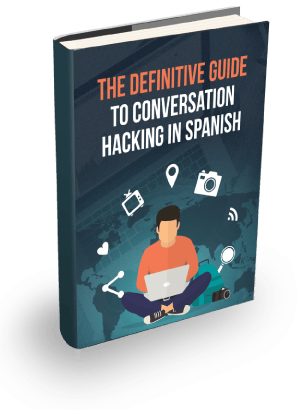I remember the agony of my first F in high school. I was 15 and not looking forward to giving my parents the news.
I had been studying French for 3 years and could barely speak a word. My grammar sucked. My vocabulary was non-existent and despite sitting through 3 classes a week for 3 years I was still a long way from ever having a conversation in French. But, I wasn’t alone, my classmates were in the same situation. Maybe I wasn’t the victim of bad genes but a victim of a bad system.
That system is the old way of language learning.
There is a now a movement of language learners that aren’t playing by the old rules. Why spend 5 or 6 years learning a language when you could achieve your goals in 5 or 6 months. The old way is slow and has a low success rate, the new way interesting, fun and far more effective.
The movement of language learners that I am referring to is that of the conversation hackers.
The conversation hacking movement is epitomised by high-profile language students such as Tim Ferriss and Benny Lewis.
The movement is based on learning techniques and strategies for achieving conversational levels in a target language in a fraction of the time that it would take with the traditional approach.
What Is Conversation Hacking?
The best definition that captures the movement is:
“Conversation hacking is the pursuit of novel methods to shortcut the time required to achieve a conversational level in a second language”
It’s about finding the most efficient and effective ways to learn a language. It’s about minimising the learning curve and getting to a point where the language can be enjoyed as quickly as possible.
The new way includes a set of principles and methods that conversation hackers across the globe are now utilising to achieve their language learning goals.
Conversation Hacking Principles
There are seven fundamental principles of conversation hacking that you can use to quickly and effectively target and achieve a conversational level.
1. Fluency Is Not The Goal
Conversation hacking requires a better definition of the destination – fluency is not it. The first principle requires that you set better targets and ask better questions.
Conversation hacking is about realising a level where you can converse with someone without relying on a textbook or translation service.
It doesn’t mean you have to be perfect and encourages mistakes … scrap that … it requires them! Making mistakes is fundamental to conversation hacking and a key part of the accelerated learning process.
Rather than state you desire to be fluent in a new language – you instead ask how can I converse as quickly as possible?
This one question alone defines a better approach and the essence of the new game.
2. Not All Words Are Created Equally
The second most important principle is that not all vocabulary words require your attention. In English there are over 250,000 words yet only 20,000 are used in regular day-to-day communication.
In Spanish these numbers are even better – there is a total of 100,000 words and the top 1000 most frequently used words will give you 87% of spoken communication.
The conversation hacker focuses his or her efforts on these top 1000 words first.
3. Not All Grammar Rules Are Created Equally
Similar to Spanish vocabulary, the rules of Spanish grammar should also be approached with disparate attention.
Conversation hackers use the grammar that is going to give them biggest return for their investment of time. Check out my post on grammar hacking.
4. Total Vocabulary And Grammar Are Different To Useable Vocabulary And Grammar
Say you have committed 1000 words to memory – can you recall and use those words on demand?
Conversation hackers know that the words they have been committed to memory do not become effective until they can be used.
For example, you may be able to read an article in your target language from the words in your total vocabulary but you will not be able to converse until you can use and recall those words when you require them.
Put another way, there is a gap between the total number of words you understand and the total number of words you can use in the moment of conversation.
Conversation hackers appreciate that this gap exists and seek to close it a quickly as possible.
5. Listening Comprehension Is Hacked By Active Listening and Context
Listen comprehension is a critical skill for conversation. Conversation hackers use techniques such as active listening exercises and context to understand the sounds of a new language as quickly as possible.
The best form of active listening is having a real conversation with a native speaker. Alternative forms of practice include using language tools and courses that incorporate active listening exercises ahead of passive ones.
6. Elements Of Pronunciation Are Not Created Equally
Similar to vocabulary and grammar, when you are working on your Spanish pronunciation you need to focus your efforts on the sounds that will ensure you are understood.
For Spanish, there are lots of interesting new sounds. For example, the ‘g’ of ‘gente‘, the ‘ll’ of ‘llegar’, the ‘y’ of ‘ayudar’ and the ‘ñ’ of ‘mañana‘. These sounds are fun to practise because they are unfamiliar. But, if you want to be understood by Spanish natives, the most important sounds to practise are the vowels.
If you can learn how to consistently say the Spanish ‘a’, ‘e’, ‘i’, ‘o’, and ‘u’ sounds, your Spanish will sound fantastic, and you will be understood by Spanish natives all over the Spanish speaking world.
The reason the vowels in Spanish are so important for effective communication is because English has a lot more vowel sounds than Spanish.
When you are speaking Spanish, if you aren’t concentrating, you may slip one of your English vowels into a Spanish word. And, if you do, the Spanish native you are speaking with might not understand what you have said because the sound doesn’t register or they might think you are referring to another Spanish word altogether.
7. Conversational Skills In General Need To Be Developed
Outside of language specific skills, you need to be able to start, stop and continue a conversation. These skills can be transferred from English.
Conversation hackers know that the basics of keeping a conversation going, moving past small talk and being able to say what you want to say in a different way are extremely useful in the conversation hacking process.
This last principle is not so much a language skill as a life skill. But, conversation hackers know it is critical to their conversation hacking process. They know that without this skill it is difficult to convert total vocabulary to usable vocabulary, it is difficult to get enough regular output and use of the language, and it is difficult to have enough input exposure to the target language in order to lift their developing conversation skills.
In summary, the underlying theme to conversation hacking is that the elements of each aspect of language learning can be divided into high and low value. Conversation hackers know that the best way to reach a conversational level quickly is to hack the learning process by focusing on the high value elements only.
Perfecting a language can take 20 or 30 years – conversation hackers do not have this much time. They know that achieving a good level is just as useful as achieving a perfect level.
The question is – is conversation hacking for you?




How can you incorporate the 7 principles of conversation hacking in your Spanish routine?